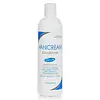What's inside
What's inside
 Key Ingredients
Key Ingredients

No key ingredients
 Benefits
Benefits

 Concerns
Concerns

 Ingredients Side-by-side
Ingredients Side-by-side

Water
Skin ConditioningCetearyl Alcohol
EmollientBehentrimonium Chloride
PreservativeGlycerin
HumectantCetyl Alcohol
EmollientParfum
MaskingPhenoxyethanol
PreservativeCetrimonium Chloride
AntimicrobialIsopropyl Palmitate
EmollientIsopropyl Alcohol
SolventCaprylyl Glycol
EmollientPolyquaternium-37
Steapyrium Chloride
AntimicrobialGuar Hydroxypropyltrimonium Chloride
Skin ConditioningPropylene Glycol Dicaprylate/Dicaprate
EmollientEthylhexylglycerin
Skin ConditioningPanthenol
Skin ConditioningPPG-1 Trideceth-6
Skin ConditioningIsopropyl Myristate
EmollientAcrylates/Stearyl Methacrylate Copolymer
Emulsion StabilisingCitric Acid
BufferingIsopropyl Laurate
EmollientSorbitan Oleate
EmulsifyingCetearamidoethyldiethonium Succinoyl Hydrolyzed Pea Protein
CleansingHypnea Musciformis Extract
Skin ProtectingSargassum Filipendula Extract
Skin ProtectingSorbitol
HumectantCaprylic/Capric Triglyceride
MaskingChamomilla Recutita Flower Extract
MaskingHelianthus Annuus Seed Oil
EmollientMangifera Indica Seed Butter
Skin ConditioningPersea Gratissima Oil
Skin ConditioningRicinus Communis Seed Oil
MaskingCoco-Glucoside
CleansingGelidiella Acerosa Extract
Skin ProtectingAlgin
MaskingCarrageenan
Chitosan
Xanthan Gum
EmulsifyingCoumarin
PerfumingLinalool
PerfumingWater, Cetearyl Alcohol, Behentrimonium Chloride, Glycerin, Cetyl Alcohol, Parfum, Phenoxyethanol, Cetrimonium Chloride, Isopropyl Palmitate, Isopropyl Alcohol, Caprylyl Glycol, Polyquaternium-37, Steapyrium Chloride, Guar Hydroxypropyltrimonium Chloride, Propylene Glycol Dicaprylate/Dicaprate, Ethylhexylglycerin, Panthenol, PPG-1 Trideceth-6, Isopropyl Myristate, Acrylates/Stearyl Methacrylate Copolymer, Citric Acid, Isopropyl Laurate, Sorbitan Oleate, Cetearamidoethyldiethonium Succinoyl Hydrolyzed Pea Protein, Hypnea Musciformis Extract, Sargassum Filipendula Extract, Sorbitol, Caprylic/Capric Triglyceride, Chamomilla Recutita Flower Extract, Helianthus Annuus Seed Oil, Mangifera Indica Seed Butter, Persea Gratissima Oil, Ricinus Communis Seed Oil, Coco-Glucoside, Gelidiella Acerosa Extract, Algin, Carrageenan, Chitosan, Xanthan Gum, Coumarin, Linalool
Ingredients Explained
These ingredients are found in both products.
Ingredients higher up in an ingredient list are typically present in a larger amount.
Caprylyl Glycol is a humectant and emollient, meaning it attracts and preserves moisture.
It is a common ingredient in many products, especially those designed to hydrate skin. The primary benefits are retaining moisture, skin softening, and promoting a healthy skin barrier.
Though Caprylyl Glycol is an alcohol derived from fatty acids, it is not the kind that can dry out skin.
This ingredient is also used as a preservative to extend the life of products. It has slight antimicrobial properties.
Learn more about Caprylyl GlycolCetearyl alcohol is a mixture of two fatty alcohols: cetyl alcohol and stearyl alcohol. It is mainly used as an emulsifier. Emulsifiers help prevent the separation of oils and products. Due to its composition, it can also be used to thicken a product or help create foam.
Cetearyl alcohol is an emollient. Emollients help soothe and hydrate the skin by trapping moisture.
Studies show Cetearyl alcohol is non-toxic and non-irritating. The FDA allows products labeled "alcohol-free" to have fatty alcohols.
This ingredient is usually derived from plant oils such as palm, vegetable, or coconut oils. There is debate on whether this ingredient will cause acne.
Due to the fatty acid base, this ingredient may not be Malassezia folliculitis safe.
Learn more about Cetearyl AlcoholGlycerin is already naturally found in your skin. It helps moisturize and protect your skin.
A study from 2016 found glycerin to be more effective as a humectant than AHAs and hyaluronic acid.
As a humectant, it helps the skin stay hydrated by pulling moisture to your skin. The low molecular weight of glycerin allows it to pull moisture into the deeper layers of your skin.
Hydrated skin improves your skin barrier; Your skin barrier helps protect against irritants and bacteria.
Glycerin has also been found to have antimicrobial and antiviral properties. Due to these properties, glycerin is often used in wound and burn treatments.
In cosmetics, glycerin is usually derived from plants such as soybean or palm. However, it can also be sourced from animals, such as tallow or animal fat.
This ingredient is organic, colorless, odorless, and non-toxic.
Glycerin is the name for this ingredient in American English. British English uses Glycerol/Glycerine.
Learn more about GlycerinPanthenol is a common ingredient that helps hydrate and soothe the skin. It is found naturally in our skin and hair.
There are two forms of panthenol: D and L.
D-panthenol is also known as dexpanthenol. Most cosmetics use dexpanthenol or a mixture of D and L-panthenol.
Panthenol is famous due to its ability to go deeper into the skin's layers. Using this ingredient has numerous pros (and no cons):
Like hyaluronic acid, panthenol is a humectant. Humectants are able to bind and hold large amounts of water to keep skin hydrated.
This ingredient works well for wound healing. It works by increasing tissue in the wound and helps close open wounds.
Once oxidized, panthenol converts to pantothenic acid. Panthothenic acid is found in all living cells.
This ingredient is also referred to as pro-vitamin B5.
Learn more about PanthenolWater. It's the most common cosmetic ingredient of all. You'll usually see it at the top of ingredient lists, meaning that it makes up the largest part of the product.
So why is it so popular? Water most often acts as a solvent - this means that it helps dissolve other ingredients into the formulation.
You'll also recognize water as that liquid we all need to stay alive. If you see this, drink a glass of water. Stay hydrated!
Learn more about Water